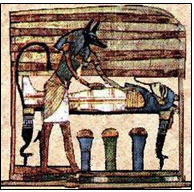The mining supercycle and its demise
Facing Reality in Five Uneasy Stages
Supercycle meets Kubler-Ross
Denial & Acceptance and Everything In Between
+ The marketplace is finally realising that the Commodities Supercycle is dead
+ Mining though will rebound just in a different form to that which prevailed from 2001-2011
+ The travails of some commodities (oil for example) are good for the rest of the mining sector
It has taken the market four long years to finally grasp that the Mining Supercycle is dead
Some remain in denial (especially hardcore gold & silver bulls) and there is no shaking their believe that the price of their favoured metals will be resurrected
Last Rites of the Supercycle
The "death throes" of the once vaunted Commodities Supercycle have been dragging on now since 2011 and are starting to look like the much derided "death scene" in the original Brideshead Revisited in which Sir Laurence Olivier took seemingly forever to depart the mortal coil. Like the Supercycle, that scene had an inevitability about it and eventually the viewers were anxious for it all to be over.
Those amongst us who believed the Supercycle was immortal have now been brought down to earth because all good things must end... but maybe it's a truism that all bad things must end too... so in the wake 
 of the Supercycle's demise (and there are a few hardies out there who sustain it will rise from its grave) we now should accept matters and look beyond.
of the Supercycle's demise (and there are a few hardies out there who sustain it will rise from its grave) we now should accept matters and look beyond.
Five Uneasy Stages
Musing about the Supercycle recently I was struck at the many mood changes that those in the mining community have experienced over the last four years as they accepted (or rejected) the changes that were happening around them and bringing an "end to an era". The fact that the era was only a relatively short ten years from 2001 to 2011 (or less in some estimations) and that there had been booms and busts before didn't stop them from positing that "this time it is different" or that the patient would rise Lazarus-like and start to dance again.
The parallel that came to mind was the K? 1/4 bler-Ross Model which postulates a series of emotional stages experienced by survivors of an intimate's death, wherein the five stages are denial, anger, bargaining, depression and acceptance. This scheme of things first saw light of day as the brainchild of Swiss psychiatrist Elisabeth K? 1/4 bler-Ross in her 1969 book and has gained widespread acceptance ever since.
I thought it might be interesting (or depressing depending on your mood) to go through the "stages" and apply them to the period since the Supercycle first ran into heavy weather in 2011. First we should note that the process had intimations of mortality in 2008 when the Global Financial Crisis gave the mining/commodity space a severe knock, which one might indeed call a "near-death" experience. That was probably the start of one of the fatal flaws for later on because it led many to believe that if the Supercycle could survive that then it was truly immortal. Alas this was a mass delusion and a triumph of wishful thinking over the theory of economic cycles. It gave the market another two good years with their beloved boom but relapse set in and since then it has been resolutely downhill excepting some small flickers of the eyelids of our stricken patient.
So how might we merge the K? 1/4 bler-Ross model with the mining reality in five uneasy stages:
Denial - The first reaction is denial. In this stage individuals believe the diagnosis is somehow mistaken, and cling to a false, preferable reality - Despite the prolonged nature of the Supercycle's woes, this is a stage in which one might say 25% of the mining crowd still dwell. Their numbers are whittled down each year (more by bankruptcy than by forces of nature). It's hard to fathom that four years of such grinding agony can have a bright side, but for these players it does. This group seems to be declining by about five percent per annum and will be extinguished finally by the end of the decade. Particularly prominent here are the Gold Bugs and Silver Nuts. The latter have tugged down on their tin-foil hats and regard them as a sort of protection from the evil rays being directed at their beloved metals by the Satanic forces of JP Morgan and CBOT/CME (with the Fed and Goldman Sachs in the mix). Both feel that the twin historical threats of political instability (including global war) and monetary debasement are still potent motors to fire up their beloved precious metals and save the day. However, neither have come to the rescue and they might as well swing a terrified chicken over the patient while intoning macumba prayers as hope that somehow Janet Yellen will see the light and go onto a gold (or even better yet silver) standard.
Anger - When the individual recognizes that denial cannot continue, it becomes frustrated, especially at proximate individuals. Certain psychological responses of a person undergoing this phase would be: "Why me? It's not fair!"; "How can this happen to me?"; '"Who is to blame?"; "Why would this happen?". The answer here is firstly the TSX, but hotly followed by the Federal Reserve, the aforementioned Great Satans, greedy mining executives, the perfidious Chinese, consultants, brokers, your next door neighbor and fluoridated water supplies. The recriminations didn't really begin until 2013 as everyone hoped this was just a blip, but then when it wasn't the most central players got slammed. Mining executives rightly need to carry the can for many of the excesses and thus are lying low (if they aren't stocking shelves by night at the local Walmart to earn a crust). The one group not really getting the blame are the investors themselves who, while it lasted, happily banked the coin that ran out of the fruit machine..... until it didn't any more.
Bargaining - The third stage involves the hope that the individual can avoid a cause of grief. Usually, the negotiation for an extended life is made in exchange for a reformed lifestyle. People facing less serious
 trauma can bargain or seek compromise. This phase as it applies to mining is when the investors thought that they should narrow down their portfolios, upgrade the stocks they held, get rid of explorers and only go with "quality managements". Mining execs responded by firing the IR people, firing the secretarial support, dispensing with their manicurists and golf caddies and finally lighting candles to the Pachamama. Alas these didn't work either and it started to feel like this was like a Titanic that didn't even have a single lifeboat for the First Class either. All were going down with the ship no matter what they did to avoid the fate.
trauma can bargain or seek compromise. This phase as it applies to mining is when the investors thought that they should narrow down their portfolios, upgrade the stocks they held, get rid of explorers and only go with "quality managements". Mining execs responded by firing the IR people, firing the secretarial support, dispensing with their manicurists and golf caddies and finally lighting candles to the Pachamama. Alas these didn't work either and it started to feel like this was like a Titanic that didn't even have a single lifeboat for the First Class either. All were going down with the ship no matter what they did to avoid the fate.
Depression - "I'm so sad, why bother with anything?"; "I'm going to die soon so what's the point?"; "I miss my loved one, why go on?" During the fourth stage, the individual becomes saddened by the mathematical probability of death. In this state, the individual may become silent, refuse visitors and spend much of the time mournful and sullen. This really set in after 2014. It was decided not to explore, not to do press releases, no PEAs or expanded resources, not to turn up at conferences and not to indulge in any promotion. A few could manage some graveyard humour, while the rest sat through long dark northern winters wondering why they hadn't accepted "that crazy offer from Kinross" in the good old days.
Acceptance - "It's going to be okay."; "I can't fight it, I may as well prepare for it."; "Nothing is impossible." In this last stage, individuals embrace mortality or inevitable future. People dying may precede the survivors in this state, which typically comes with a calm, retrospective view for the individual, and a stable condition of emotions. This has been the mood of 2015 (excepting the 20% in total denial mentioned in the first stage). "Capitulation" is the word of the year. Investors talk of the market capitulating but they are not saying that they themselves are giving in, it's somebody else! Normally capitulation would mean everyone selling everything and running for the hills and yet most investors are still sitting on their positions because they believe in a resurrection scenario. They want to sell on the upticks, of which there have been precious few and when the upticks eventually come then they will hold on because they are down so much and they might "get just that little bit more" by holding in a rising market. Mining investors KNOW there is life after death!
Conclusion
A key thing to differentiate is that it's the Supercycle that has passed on, not the mining sector. Mining will come back, just in another form.
In some ways one almost wishes that the mining markets had done a "Thelma & Louise" going (spoiler alert) off the cliff back in 2011 and saving us all a lot of agony on the way down. Instead metals prices retraced upwards so many times on the way down that investors and corporates ended up like frogs in the boiling water, not realizing that they were being cooked, when they imagined they were in that Jacuzzi in Aspen for just one last time.
In a year in which the very existence of the Godzilla of the commodities industry, Glencore, can be mentioned in the same paragraph as the word "capitulation" one can perceive that the planets are very misaligned. However life goes on and what was a gloomy morass of mining execs and investors has not been transformed into some sort of wartime spirit sleeping in the air-raid bunkers and surviving on half- rations.
At this point the denizens of the mining world need to strap on their hard hats (no, not the tinfoil ones), pray the rations hold out and hope there are no more direct hits on their air-raid shelters. And eventually as Churchill might put it the survivors will emerge from the darkness and "may move forward into broad, sunlit uplands". Here's hoping!
Important disclosures
I, Christopher Ecclestone, hereby certify that the views expressed in this research report accurately reflect my personal views about the subject securities and issuers. I also certify that no part of my compensation was, is, or will be, directly or indirectly, related to the specific recommendations or view expressed in this research report.
Hallgarten's Equity Research rating system consists of LONG, SHORT and NEUTRAL recommendations. LONG suggests capital appreciation to our target price during the next twelve months, while SHORT suggests capital depreciation to our target price during the next twelve months. NEUTRAL denotes a stock that is not likely to provide outstanding performance in either direction during the next twelve months, or it is a stock that we do not wish to place a rating on at the present time. Information contained herein is based on sources that we believe to be reliable, but we do not guarantee their accuracy. Prices and opinions concerning the composition of market sectors included in this report reflect the judgments of this date and are subject to change without notice. This report is for information purposes only and is not intended as an offer to sell or as a solicitation to buy securities.
Hallgarten & Company or persons associated do not own securities of the securities described herein and may not make purchases or sales within one month, before or after, the publication of this report. Hallgarten policy does not permit any analyst to own shares in any company that he/she covers. Additional information is available upon request.
(C) 2015 Hallgarten & Company Limited. All rights reserved. Reprints of Hallgarten reports are prohibited without permission.
Web access at:
Research: www.hallgartenco.com
